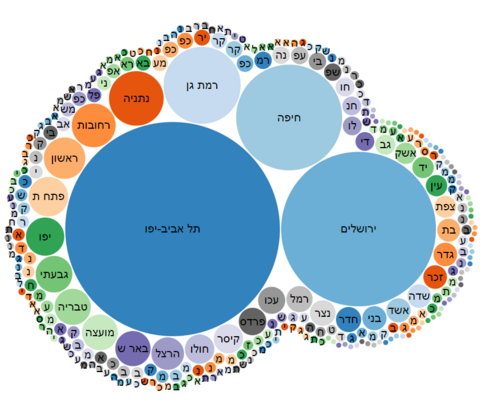News
Mehfil e Sama – Qawwali Session – ARY Qtv
Subscribe Here: https://bit.ly/3dh3Yj1
#Mehfilesama #Qawali #ARYQtv
Official Facebook: https://www.facebook.com/ARYQTV/
Official Website: https://aryqtv.tv/
Watch ARY Qtv Live: http://live.aryqtv.tv/
Programs Schedule: https://aryqtv.tv/schedule/
Islamic Information: https://bit.ly/2MfIF4P
Android App: https://bit.ly/33wgto4
Ios App: https: https://apple.co/2v3zoXW
To Watch More Click Here: http://aryqtv.tv
Segmented Vases for Mother’s Day
,water hammer,underwater stucture,morning glory spillway,civil engineer,public works,thermal expansion,tuned
mass damper,grady hillhouse,
How to Change Default Search Engine on Chrome Browser?
Stonepillow opens new charity shop in Chichester
Wikimedia Israel and the Israel Film Archive bring Short films from Israel’s History to Wikidata
Talking Drupal: Talking Drupal #381 – A Modular Web with Sam Bhagwat
This is episode #381 A Modular Web with Sam Bhagwat.
For show notes visit: www.talkingDrupal.com/381
Topics
- Gatsby
- Founding Gatsby
- Modular: The Web’s New Architecture
- When did you decide to write the book
- Key tech changes over time
- What is the Modular Web
- Successful architecture
- Is it similar to serverless
- Challenges
- Drupal focused companies and modularity
- Advice on transitioning
- Drupal
- 2023 and Gatsby
- Staying competitive in JS
- Kindle Book
Resources
- Modular: The Web’s New Architecture: (And How It’s Changing Online Business)
- gatsby-plugin-drupal-i18next
- Gatsby and Drupal (224, 260)
- The Website Owners Manual by Paul Boag
- tc39
- Gatsby: The reactive site generator (and a live demo tour of how we got here)
Guests Hosts
Nic Laflin – www.nLighteneddevelopment.com @nicxvan John Picozzi – www.epam.com @johnpicozzi Stephen Cross – www.StephenCross.com @stephencross
MOTW Correspondent
Martin Anderson-Clutz – @mandclu Decoupled Interface Translations Allows a headless application to use Drupal-managed interface translations.
Adding tests to an existing project
How to create a Ceph cluster on a single machine
Ceph storage is common in many large-scale use cases, so simpler implementations for testing or training may go unnoticed. Read More at Enable Sysadmin
The post How to create a Ceph cluster on a single machine appeared first on Linux.com.
health @ Savannah: GNU Health Hospital Management patchset 4.0.5 released
Dear community
GNUHealth 4.0.5 patchset has been released !
Priority: High
Table of Contents
- About GNU Health Patchsets
- Updating your system with the GNU Health control Center
- Installation notes
- List of other issues related to this patchset
About GNU Health Patchsets
We provide “patchsets” to stable releases. Patchsets allow applying bug fixes and updates on production systems. Always try to keep your production system up-to-date with the latest patches.
Patches and Patchsets maximize uptime for production systems, and keep your system updated, without the need to do a whole installation.
NOTE: Patchsets are applied on previously installed systems only. For new, fresh installations, download and install the whole tarball (ie, gnuhealth-4.0.5.tar.gz)
Updating your system with the GNU Health control Center
Starting GNU Health 3.x series, you can do automatic updates on the GNU Health HMIS kernel and modules using the GNU Health control center program.
Please refer to the administration manual section ( https://en.wikibooks.org/wiki/GNU_Health/Control_Center )
The GNU Health control center works on standard installations (those done following the installation manual on wikibooks). Don’t use it if you use an alternative method or if your distribution does not follow the GNUHealth packaging guidelines.
Installation Notes
You must apply previous patchsets before installing this patchset. If your patchset level is 4.0.5, then just follow the general instructions. You can find the patchsets at GNU Health main download site at GNU.org (https://ftp.gnu.org/gnu/health/)
In most cases, GNU Health Control center (gnuhealth-control) takes care of applying the patches for you.
Pre-requisites for upgrade to 4.0.5: None
Now follow the general instructions at
After applying the patches, make a full update of your GNU Health database as explained in the documentation.
When running “gnuhealth-control” for the first time, you will see the following message: “Please restart now the update with the new control center” Please do so. Restart the process and the update will continue.
- Restart the GNU Health server
List of other issues and tasks related to this patchset
- bug #63558: Fault: ‘NoneType’ object has no attribute ‘name’
- bug #63557: Missing view architecture for (‘calendar.category’, None, ‘tree’)
- bug #63533: Model ‘gnuhealth.pol’ is missing a default access
- bug #63532: health_caldav misses requiremnt vobject in setup.py
- bug #63517: Fault: ‘webdav’ is not in list
- bug #62777: The term health prof used for both initiating and signing professional in patient evaluation
- bug #62634, Missing Spanish Translations
For detailed information about each issue, you can visit :
https://savannah.gnu.org/bugs/?group=health
About each task, you can visit:
https://savannah.gnu.org/task/?group=health
For detailed information you can read about Patches and Patchsets
https://en.wikibooks.org/wiki/GNU_Health/Patches_and_Patchsets

